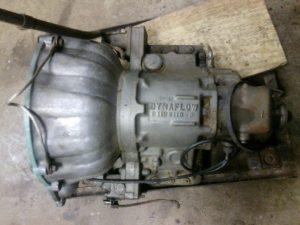The automobile has come a long way since its inception in the late 1800s. Originally considered a luxury item, the automobile has become an essential part of modern life, with millions of cars on the roads worldwide. The earliest automobiles were powered by steam engines, but the development of the internal combustion engine in the late 19th century paved the way for the mass production of gasoline-powered cars. So who is the automatic transmission inventor – read the following article and discover the answer.
Transmissions are an integral part of any vehicle, including automobiles. The transmission is responsible for transferring the power generated by the engine to the wheels, allowing the car to move forward or backward. Transmissions come in various types, including manual, automatic, and continuously variable transmissions. The correct transmission type can improve fuel economy and increase the car’s overall efficiency.
The automatic transmission is a crucial component in modern cars, providing ease of use and convenience for drivers. An automatic transmission eliminates the need for a driver to shift gears manually, allowing them to focus on driving and the road ahead. The automatic transmission also makes it easier for drivers to navigate different driving conditions, such as traffic jams or steep hills.

The automatic transmission has come a long way since its inception in the early 1900s, with advancements in technology making it more efficient and reliable. Modern automatic transmissions can adapt to different driving styles, and some even have manual shift modes for a more engaging driving experience.
Several inventors contributed to the development of the automatic transmission, with each one bringing their unique ideas and innovations to the table. Alfred Horner Munro filed the first patent for a “gearless” transmission in 1904, but his design was not commercially successful. Brazilian engineer José Braz Araripe developed a practical automatic transmission using a fluid coupling in 1928, providing smoother shifting and better control over power delivery to the wheels.
Earl Thompson, an American engineer, made several advancements in the 1930s and 1940s that helped improve the efficiency and reliability of automatic transmissions. General Motors and Lockheed collaborated to develop the Hydra-Matic transmission, which became the first mass-produced automatic transmission to be used in mainstream vehicles in 1940. These inventors and their contributions helped shape the modern automatic transmission and improve the overall driving experience.
Contents
Alfred Horner Munro
Alfred Horner Munro was a Canadian engineer who made significant contributions to the development of the automatic transmission. Born in Nova Scotia in 1868, Munro studied engineering at McGill University in Montreal before pursuing a career in automotive engineering. He worked for several automobile manufacturers, including McLaughlin Motor Car Company, before focusing on his own designs.
In 1904, Munro filed a patent for a “gearless” transmission that he believed would revolutionize the automotive industry. His design used a series of hydraulic pumps and turbines to transfer power from the engine to the wheels, eliminating the need for traditional gears. Munro’s transmission promised smoother shifting, better fuel economy, and reduced wear and tear on the vehicle’s components.
However, Munro’s design faced several challenges that prevented it from becoming commercially successful. One of the biggest issues was the high cost of manufacturing, as the precision parts required for the transmission were expensive to produce. Additionally, Munro’s design was complex and difficult to repair, which made it less appealing to mechanics and car owners alike. Despite these challenges, Munro continued to work on his design, making improvements and refinements throughout his career.
José Braz Araripe
José Braz Araripe was a Brazilian engineer who made significant contributions to the development of the automatic transmission. Born in 1880 in Ceará, Brazil, Araripe studied engineering in Brazil and France before starting his own engineering firm in Rio de Janeiro. Araripe was passionate about improving the efficiency and performance of automobiles, and he focused on developing an automatic transmission that would provide a smoother and more controlled driving experience.
In 1928, Araripe filed a patent for an automatic transmission that used a fluid coupling instead of gears to transfer power from the engine to the wheels. His design used a series of vanes inside a chamber filled with fluid, which allowed the engine to transfer power to the transmission without the need for traditional gears. Araripe’s design provided smoother shifting, improved fuel economy, and reduced wear and tear on the vehicle’s components.
One of the main advantages of Araripe’s design over Munro’s was its simplicity. Araripe’s transmission was easier to manufacture, repair, and maintain than Munro’s complex hydraulic system. Additionally, Araripe’s design provided better control over power delivery to the wheels, allowing drivers to better navigate different driving conditions. Araripe’s transmission also allowed for smoother shifting, which improved the overall driving experience and reduced wear and tear on the vehicle’s transmission. Araripe’s design provided the foundation for many modern automatic transmissions, and his contributions to the field of automotive engineering continue to be celebrated to this day.
Earl Thompson
Earl Thompson was an American mechanical engineer who made significant contributions to the field of automotive engineering, particularly in the area of automatic transmissions. Born in 1895 in Kansas, Thompson studied mechanical engineering at the University of Kansas before beginning his career as an engineer for the Marmon Motor Car Company. He later worked for General Motors and Chrysler before starting his own engineering firm in the 1940s.
In the 1930s and 1940s, Thompson developed several innovations that helped improve the performance and reliability of automatic transmissions. One of his most significant contributions was the development of the “planetary” automatic transmission, which used a series of gears arranged in concentric rings to transfer power from the engine to the wheels. This design provided a smoother and more efficient transfer of power, and it became the basis for many modern automatic transmissions.
Thompson’s innovations in the field of automatic transmissions were significant because they helped make driving more accessible and enjoyable for a wider range of people. Prior to Thompson’s work, automatic transmissions were rare and expensive, and they were typically only found in high-end luxury vehicles. Thompson’s innovations helped make automatic transmissions more affordable and reliable, which allowed them to become more common in everyday vehicles. Today, automatic transmissions are standard in most cars and trucks, and they continue to be an essential component of the modern automotive industry.
General Motors
General Motors (GM) played a significant role in the development of the automatic transmission through their collaboration with aircraft manufacturer Lockheed. In the late 1930s, GM partnered with Lockheed to develop a new type of transmission that would be more reliable and efficient than existing designs. The result was the Hydra-Matic transmission, which would go on to become one of the most successful and widely used automatic transmissions in automotive history.
The Hydra-Matic transmission was first introduced in 1940 and was initially only available as an optional upgrade on select GM vehicles. However, its success quickly led to its widespread adoption, and by the mid-1940s, it was standard on nearly all GM vehicles. The Hydra-Matic used a series of gears and clutches to transfer power from the engine to the wheels, providing a smoother and more efficient driving experience than previous automatic transmissions.
The introduction of the Hydra-Matic had a significant impact on the automotive industry, as it helped usher in the mass production of automatic transmissions. Prior to the Hydra-Matic, automatic transmissions were expensive and unreliable, and they were typically only found in high-end luxury vehicles. However, the success of the Hydra-Matic helped make automatic transmissions more affordable and accessible, which allowed them to become more common in everyday vehicles. Today, automatic transmissions are standard in most cars and trucks, and they continue to be a vital component of the modern automotive industry. The success of the Hydra-Matic transmission helped establish GM as a leader in the automotive industry, and it remains one of the company’s most significant contributions to automotive engineering.
Conclusion – Who is the Automatic Transmission Inventor
The development of the automatic transmission has been a significant milestone in the history of the automotive industry. Over the years, several inventors have contributed to the evolution of the automatic transmission, including Alfred Horner Munro, José Braz Araripe, and Earl Thompson. Each of these inventors brought their unique perspective and expertise to the development of automatic transmissions, resulting in a range of innovative designs and technologies that continue to influence transmission design today.
The automatic transmission has become an essential component of modern cars, providing a smoother and more comfortable driving experience than manual transmissions. As technology continues to evolve, we can expect to see further advancements in transmission technology, such as the development of more efficient and environmentally friendly designs. Additionally, as the automotive industry continues to shift towards electric vehicles, we can expect to see new types of transmissions emerge that are designed specifically for electric powertrains.
Overall, the automatic transmission has played a critical role in the evolution of the automotive industry, and its importance is likely to continue into the future. As we look toward the future, we can expect to see further advancements in transmission technology that will help make driving even more comfortable, efficient, and enjoyable.

1 thought on “Automatic Transmission Inventor – Who is Given Credit”
Comments are closed.